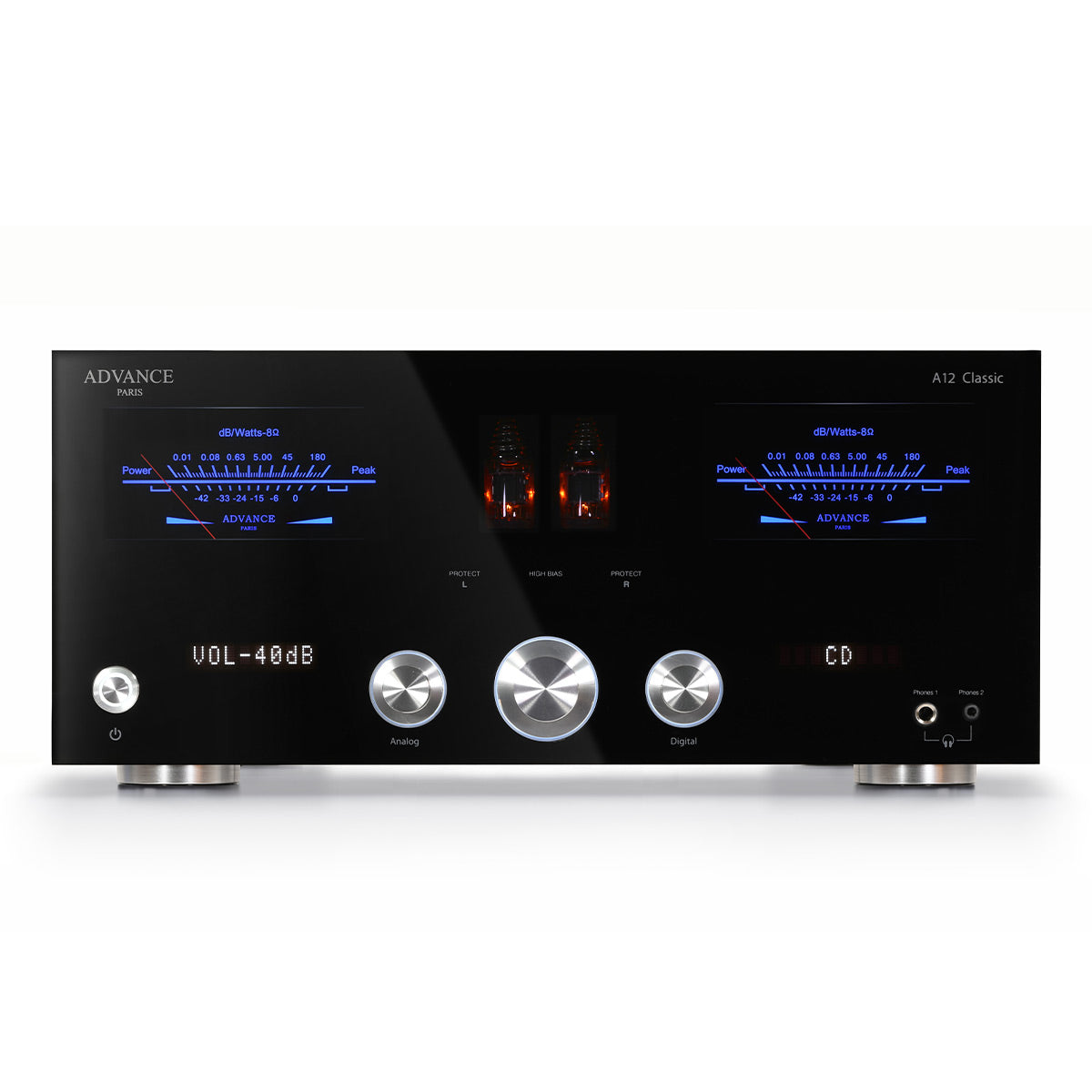Advance Paris A10 & A12 Review: Retro Design Meets Modern Sound
| Updated:Subscribe to our YouTube Channel
Introduction
Some gear just looks like it sounds great, and the Advance Paris A10 and A12 integrated amplifiers are no exception. Both carry a distinct retro flair, but how do they sound? I spent some time with both amps, and here's what I found out.
A Brief History of Advance Paris
Advance Paris began as the high-end evolution of Advance Acoustic, a brand founded in 1995 that initially focused on loudspeakers before expanding into electronics. While Advance Acoustic offered a broad range of hi-fi gear—much of it accessibly priced—Advance Paris was launched in 2013 as a rebranding effort to emphasize French heritage and premium design, targeting international audiophile markets. The brand is known not only for how incredible its equipment sounds but also for how it looks—signature VU meters and tube preamps are central to its aesthetic. These amplifiers stand apart from mainstream brands, offering distinctive character and strong appeal within the audiophile community.
Design & Build Quality
The Advance Paris A10 and A12 integrated amplifiers utilize a hybrid design that combines solid-state technology with the warmth of tube processing. These tubes, typically a pair of 12AX7s, process the audio signal in a way that enhances tonal depth and introduces subtle harmonic distortion, contributing to a more dynamic and engaging listening experience. The use of tubes not only makes the amp look amazing but provides a balance between the reliability and precision of modern solid-state amplification and the organic, smooth sound signature often associated with tube preamps. This hybrid setup allows these amps to deliver powerful performance while maintaining a refined, musical quality to the audio.
Both models feature prominent analog VU meters that enhance their visual appeal and provide users with a real-time display of power output. These meters are backlit with blue LEDs, offering a striking contrast against the black front panels and adding a touch of retro-futuristic style reminiscent of classic high-end audio equipment. These meters are more than just decorative elements; they enhance the user experience by providing a visual representation of the amplifier’s output and contributing to the units’ unique design.






Features & Connectivity
Both amplifiers boast a range of analog and digital inputs, along with USB and a built-in phono stage, ensuring seamless compatibility with a variety of devices. Whether you’re streaming music or connecting your traditional audio equipment, the A10 and A12 integrate effortlessly into any setup.




Advance Paris A10 Classic:
-
Analog Inputs: Six RCA inputs, one balanced XLR input.
-
Digital Inputs: Three optical, one coaxial, USB-B, and two HDMI inputs (one supporting ARC).
-
Phono Input: MM cartridge support.
-
Outputs: Two subwoofer outputs.
-
DAC: ES 9018 DAC supporting high-resolution audio playback.
Advance Paris A12 Classic:
-
Analog Inputs: Five RCA inputs, two balanced XLR inputs.
-
Digital Inputs: Three optical, three coaxial, AES/EBU, HDMI, USB Type-A, USB Type-B.
-
Phono Input: Supports both MM and MC cartridges with adjustable gain and capacitance.
-
Outputs: Balanced (XLR) and unbalanced (RCA) pre-out connectors, two subwoofer outputs.
-
DAC: TI PCM 1796 DAC capable of handling PCM audio up to 32-bit/192 kHz.
Both amplifiers offer optional Bluetooth connectivity via the X-FTB01 (aptX) or X-FTB02 (aptX HD) modules, allowing for wireless streaming directly from your phone to your A10 or A12 for a quick listen. Using a high-res streamer is always recommended, but this is an easy add-on to have for convenience.

First Impressions
The first thing I noticed when unboxing these integrated amplifiers is the overall look. This is not just an integrated amplifier for your home but is also a conversation piece because nobody can walk past this and not ask about it, just like a great piece of art!
After connecting both amps with a pair of Bowers & Wilkins 702s, I was very impressed by the sound of both. That said, I did notice a fuller, more dynamic sound from the A12 due to the enhanced power output and better build quality.
Another observation during setup was the difference in control interfaces. The A10 has a solo control knob to navigate inputs, volume, and the menu, whereas the A12 has three separate knobs—one for analog sources, another for digital, and a third for volume. I found the learning curve to be a bit longer with the A10, but once I spent a few minutes tinkering, it felt natural.
To test the amplifiers, I used several different tracks:
-
Boz Scaggs – "Lowdown": The bass line showcased the low-end capabilities of both amps.
-
Whitney Houston – "I Have Nothing": Her vocal dynamics were delivered with remarkable clarity and control.
-
Steely Dan – "Aja": The tight groove and layered production tested the amps' clarity. The A12 stood out slightly, revealing more dynamics and separation, especially in the drums and keys.
Final Thoughts
At the heart of it, both the A10 and A12 Classic are about the joy of listening. They each bring their own character to the table—whether it’s the warmth of the tubes, the glow of the VU meters, or the way they make your favorite songs from any genre feel fresh again. In a market filled with complexity and constant change, Advance Paris stands out by staying true to what matters: great sound, timeless design, and a focus on the listening experience above all else.
Shop Advance Paris A10 & A12 Integrated Amplifier




